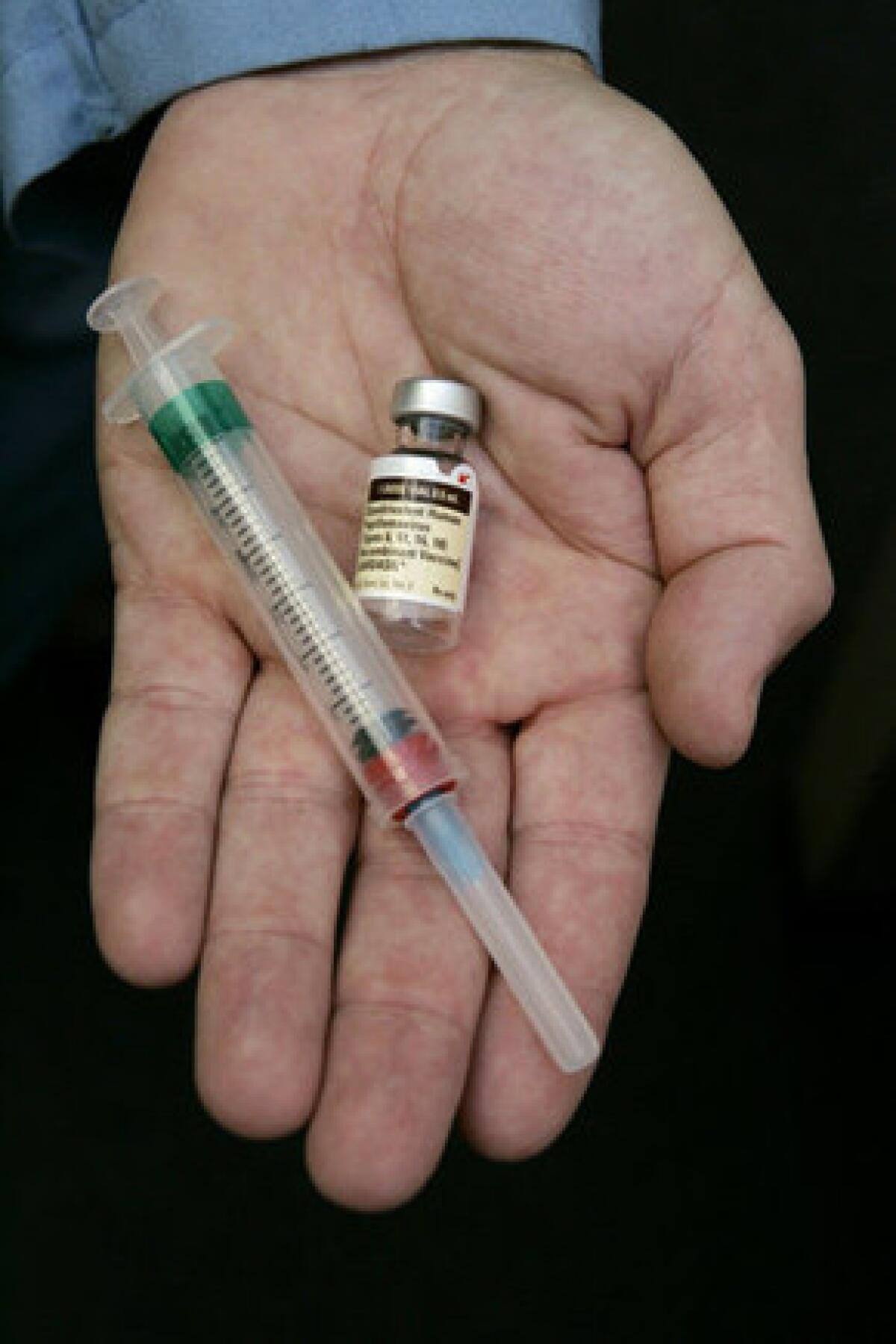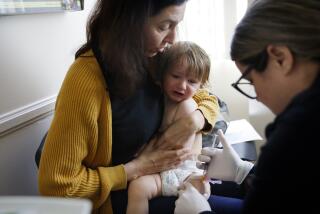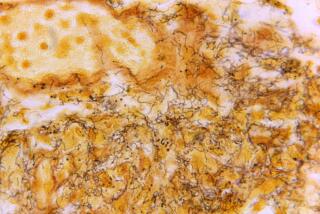HPV vaccination rate stalls. ‘We’re dropping the ball,’ CDC says

Although HPV vaccinations can reduce the risk of cancer-causing infections in adolescent girls by half, immunization rates across the United States have stalled over the last year, according to the Centers for Disease Control and Prevention.
At a Thursday press briefing, health officials said they were alarmed to find that despite the vaccine’s proven effectiveness and safety, both parents and doctors were failing to ensure that teens received the three-dose human papillomavirus vaccine along with other recommended shots.
“We’re dropping the ball,” said Dr. Tom Frieden, director of the CDC. “Our vaccination rate now is stuck at just one-third of our teen girls. The country of Rwanda has vaccinated more than 80% of their target population. If our rate were that high ... we would have more than 50,000 fewer cases of cervical cancer in the coming years.”
(Read the CDC’s Morbidity and Mortality Weekly Report on HPV vaccination rates here.)
Human papillomaviruses are the most common cause of sexually transmitted infections, and more than half of people who are sexually active become infected with one of the more than 40 types of HPV that are known to spread during vaginal, oral or anal sex, according to the National Cancer Institute.
The viruses are responsible for nearly all cases of cervical cancer, along with most cases of anal cancer, the NIC reports. The viruses also cause more than half of the cancers in the middle part of the throat and about half of vaginal, vulvar and penile cancers.
Since 2006, the Advisory Committee on Immunization practices has recommended routine vaccination of adolescent girls ages 11 or 12.
While HPV is spread primarily through sexual contact, doctors say the vaccine is most effective when given to teens before the onset of sexual activity, so that their bodies can develop immunity, according to Dr. Thomas McInerny, president of the Academy of Pediatrics.
Some parents have voiced reluctance to see their children vaccinated for a sexually transmitted disease at such a young age, saying they fear it will encourage sexual activity.
On Thursday, Frieden said that multiple studies showed that vaccinated teens do not have sex earlier than non-vaccinated peers.
“HPV vaccine does not open the door to sex; HPV vaccine closes the door to cancer,” Frieden said.
Last month, the CDC announced that the rate of HPV infection among teenage girls had dropped from 11.5% in the “pre-vaccine era” to 5.1% in the “vaccine era” -- a drop of 56%. The infection rates cover four types of HPV that are targeted by the vaccines Gardasil and Cervarix.
In addition to concerns about sexual activity, parents cited other reasons why they had not sought vaccinations for their children, even when they visited a doctor for other scheduled vaccinations.
In some cases, parents said that their children’s doctor failed to recommend the vaccine, or that they were worried about harmful side effects.
Health officials insisted Thursday that the vaccine had been proven safe and no adverse health effects had been found after the administration of 57 million doses nationwide.
Dr. Anne Schuchat, director of the National Center for Immunization and Respiratory Diseases, said that some teens reported fainting after getting the shot, but that sometimes happens with teens who are given any vaccination.
Officials said that out of all unvaccinated girls, 84% had made a healthcare visit where they received a vaccination for another purpose, such as meningitis or pertussis.
If those patients had been vaccinated for HPV as well, the coverage rate for the first dose of the three-shot treatment would have increased from 54% to 93%, the CDC reported.
“The vaccine is safe and effective,” Schuchat said. “We need doctors to recommend it and deliver it.”
Return to Science Now blog.
Follow me on Twitter @montemorin







